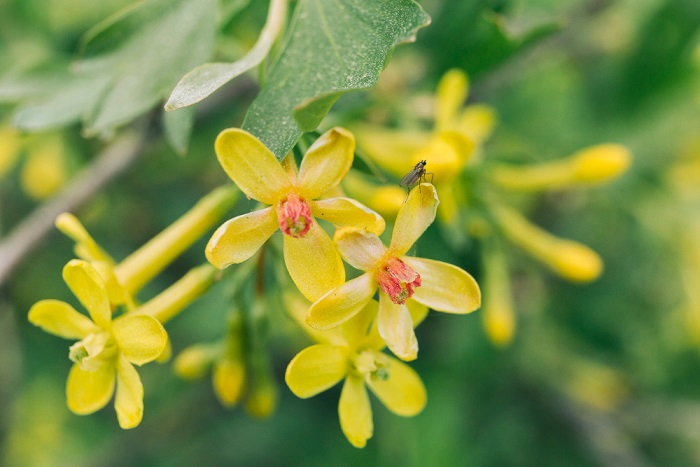Creating a well-defined garden edge can transform your outdoor space, adding both aesthetic appeal and functionality. Garden edging is a simple yet effective way to delineate garden beds, walkways, and other features, providing a polished look to your landscape. In this comprehensive guide, we will explore various types of garden edging, their benefits, installation tips, and maintenance strategies to help you achieve a beautiful and lasting garden design.
Benefits of Garden Edging
Enhanced Aesthetic Appeal
Garden edging adds a clean, finished look to your landscape. It creates a clear boundary between garden beds and lawns, making your garden look neat and well-maintained. With a wide range of materials and styles available, you can choose edging that complements your garden’s overall design.
Weed and Pest Control
Proper garden edging helps prevent the spread of weeds and pests. By creating a barrier, it minimizes the invasion of unwanted plants and insects into your garden beds. This reduces the need for frequent weeding and the use of pesticides, promoting a healthier garden environment.
Improved Soil Retention
Edging helps to keep soil and mulch within garden beds, preventing erosion and runoff. This ensures that your plants receive adequate nutrients and water, leading to healthier growth. It also keeps pathways and lawns clean by preventing soil from spilling over.
Ease of Maintenance
With clearly defined edges, mowing and trimming become much easier. Garden edging acts as a guide for lawn mowers and trimmers, reducing the risk of damaging plants and ensuring a uniform cut along the borders. This saves time and effort in maintaining your garden.
Types of Garden Edging
Metal Edging
Metal edging is durable and provides a sleek, modern look. It is often made from aluminum or steel, which resists rust and corrosion. Metal edging is easy to install and can be shaped to create curves and angles, offering flexibility in design. It is ideal for creating clean, straight lines or intricate patterns.
Stone and Brick Edging
Stone and brick edging offers a timeless, classic appearance. It is highly durable and can withstand harsh weather conditions. Stone and brick edging is perfect for traditional garden designs and can be arranged in various patterns to add texture and visual interest. This type of edging is labor-intensive to install but provides a long-lasting solution.
Plastic Edging
Plastic edging is an affordable and versatile option. It is lightweight, easy to install, and available in various colors and styles. Plastic edging can mimic the look of more expensive materials, such as stone or wood, and is ideal for creating both straight and curved borders. However, it may not be as durable as other materials and can become brittle over time.
Wood Edging
Wood edging adds a natural, rustic charm to your garden. It is available in various forms, including logs, planks, and timbers. Wood edging is easy to install and can be stained or painted to match your garden’s color scheme. However, it requires regular maintenance to prevent rot and insect damage.
Concrete Edging
Concrete edging is a durable and customizable option. It can be poured into molds to create various shapes and designs, offering endless possibilities for creative garden borders. Concrete edging is highly resistant to weather conditions and requires minimal maintenance, making it a long-lasting choice for any garden.
Installation Tips for Garden Edging
Planning and Preparation
Before installing garden edging, carefully plan your design. Measure the area where you want to install the edging and mark the boundaries with stakes and string. Consider the type of edging material that best suits your garden’s style and your budget.
Digging the Trench
For most types of garden edging, you will need to dig a trench along the marked boundaries. The depth and width of the trench will depend on the edging material. Ensure the trench is level to achieve a uniform appearance.
Placing the Edging
Place the edging material into the trench, making sure it is aligned correctly. For metal, plastic, and wood edging, you may need to use stakes or anchors to secure it in place. Stone, brick, and concrete edging usually do not require additional support but should be firmly set into the soil.
Backfilling and Compacting
After placing the edging, backfill the trench with soil, packing it tightly around the edging material. This helps to secure the edging and prevents it from shifting over time. For a finished look, add a layer of mulch or decorative stones along the edge.
Maintenance of Garden Edging
Regular Inspection
Regularly inspect your garden edging for signs of damage or wear. Check for loose stones, rusted metal, or rotting wood. Address any issues promptly to maintain the integrity and appearance of your garden borders.
Cleaning and Repairs
Clean the edging periodically to remove dirt, debris, and algae. Use a mild detergent and water for most materials. For metal edging, consider applying a rust-resistant coating to prolong its lifespan. Repair or replace damaged sections of edging as needed to keep your garden looking its best.
Seasonal Care
Different materials require specific seasonal care. For example, wood edging may need a fresh coat of stain or sealant before winter to protect it from moisture and cold. Metal edging should be checked for rust and corrosion after rainy seasons. Adjust your maintenance routine according to the material used in your garden edging.
Creative Ideas for Garden Edging
Living Edging
Living edging involves using plants to create a natural border. Low-growing shrubs, flowers, or grasses can be planted along the edges of garden beds. This adds a lush, organic look to your garden while providing additional habitat for pollinators.
Recycled Materials
Using recycled materials for garden edging is an eco-friendly option. Old bricks, reclaimed wood, and even bottles can be repurposed to create unique and sustainable garden borders. This not only reduces waste but also adds character and individuality to your landscape.
Mixed Materials
Combining different materials can create a visually interesting and dynamic garden edge. For example, you can pair stone with wood or metal with concrete to achieve a distinctive look. Mixing materials allows you to play with textures and colors, enhancing the overall design of your garden.
Conclusion
Garden edging is a crucial element in creating a beautiful and functional landscape. By choosing the right materials, planning carefully, and maintaining your edging, you can achieve a polished and professional look that enhances the overall appeal of your garden. Whether you prefer the sleekness of metal, the timelessness of stone, or the natural charm of wood, there is a garden edging solution to suit every style and budget.








Find Us on Socials